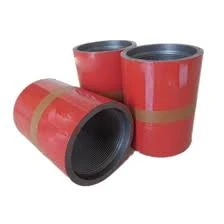- Afrikaans
- Albanian
- Amharic
- Arabic
- Armenian
- Azerbaijani
- Basque
- Belarusian
- Bengali
- Bosnian
- Bulgarian
- Catalan
- Cebuano
- Corsican
- Croatian
- Czech
- Danish
- Dutch
- English
- Esperanto
- Estonian
- Finnish
- French
- Frisian
- Galician
- Georgian
- German
- Greek
- Gujarati
- Haitian Creole
- hausa
- hawaiian
- Hebrew
- Hindi
- Miao
- Hungarian
- Icelandic
- igbo
- Indonesian
- irish
- Italian
- Japanese
- Javanese
- Kannada
- kazakh
- Khmer
- Rwandese
- Korean
- Kurdish
- Kyrgyz
- Lao
- Latin
- Latvian
- Lithuanian
- Luxembourgish
- Macedonian
- Malgashi
- Malay
- Malayalam
- Maltese
- Maori
- Marathi
- Mongolian
- Myanmar
- Nepali
- Norwegian
- Norwegian
- Occitan
- Pashto
- Persian
- Polish
- Portuguese
- Punjabi
- Romanian
- Russian
- Samoan
- Scottish Gaelic
- Serbian
- Sesotho
- Shona
- Sindhi
- Sinhala
- Slovak
- Slovenian
- Somali
- Spanish
- Sundanese
- Swahili
- Swedish
- Tagalog
- Tajik
- Tamil
- Tatar
- Telugu
- Thai
- Turkish
- Turkmen
- Ukrainian
- Urdu
- Uighur
- Uzbek
- Vietnamese
- Welsh
- Bantu
- Yiddish
- Yoruba
- Zulu
well tubing and casing
Understanding Well Tubing and Casing Essential Components of Oil and Gas Production
In the oil and gas industry, the terms tubing and casing refer to critical components used in drilling and production processes. Each serves a distinct purpose, playing a vital role in the efficient and safe extraction of hydrocarbons from underground reservoirs. This article aims to elucidate the significance and differences between well tubing and casing, highlighting their functions in well construction.
What is Well Casing?
Casing refers to the series of pipes installed in a well bore after drilling. Its primary purpose is to stabilize the wellbore, prevent the collapse of the surrounding rock, and protect groundwater resources from contamination. The casing acts as a barrier, isolating different geological formations and fluid zones. It is typically made of steel and is manufactured in various sizes and grades to suit different well conditions.
The casing is cemented in place, ensuring a secure fit that further prevents the migration of fluids between formations. This cementing process not only secures the casing but also gives it additional strength, allowing it to withstand high pressures often encountered in deep wells. There are several types of casing, including surface casing, intermediate casing, and production casing, each designated for specific depths and functions.
What is Well Tubing?
In contrast, well tubing is the pipe that carries the produced fluids to the surface after extraction. Inserted within the casing, tubing is usually smaller in diameter and is designed for easy removal and replacement if needed. The tubing is crucial for the efficient flow of oil, gas, or water, and it can be adjusted or replaced without disturbing the entire well structure.
well tubing and casing

Tubing systems are engineered to handle various pressures and temperatures, making them adaptable to different production environments. Special types of tubing, such as insulated or subsea tubing, are used in specific applications to withstand extreme conditions. Additionally, tubing allows for enhanced production techniques such as gas lift, where gas is injected to facilitate the lifting of oil to the surface.
The Importance of Casing and Tubing in Oil and Gas Production
The interplay between casing and tubing is integral to the success of oil and gas operations. Casing provides structural integrity and safety, while tubing focuses on the efficient transport of hydrocarbons. The selection of appropriate casing and tubing materials and designs is critical in addressing challenges such as corrosion, pressure fluctuations, and temperature variations encountered during the production process.
Proper installation and maintenance of both casing and tubing are essential for sustainable operations. Inadequate casing could lead to well failure or environmental hazards, such as leaks or blowouts, while damaged tubing can impede production and increase operational costs.
Conclusion
In summary, well casing and tubing are indispensable elements in the context of oil and gas exploration and production. Their complementary roles ensure both the structural integrity of the well and the efficient flow of produced fluids. Understanding the differences and functions of casing and tubing is crucial for engineers and operators to optimize well performance, reduce risks, and enhance the overall productivity of hydrocarbon extraction activities. As the industry advances, innovations in materials and technologies will undoubtedly continue to improve the design and functionality of both casing and tubing systems, paving the way for more efficient and safer oil and gas operations.
-
Tubing Pup Joints: Essential Components for Oil and Gas OperationsNewsJul.10,2025
-
Pup Joints: Essential Components for Reliable Drilling OperationsNewsJul.10,2025
-
Pipe Couplings: Connecting Your World EfficientlyNewsJul.10,2025
-
Mastering Oilfield Operations with Quality Tubing and CasingNewsJul.10,2025
-
High-Quality Casing Couplings for Every NeedNewsJul.10,2025
-
Boost Your Drilling Efficiency with Premium Crossover Tools & Seating NipplesNewsJul.10,2025







